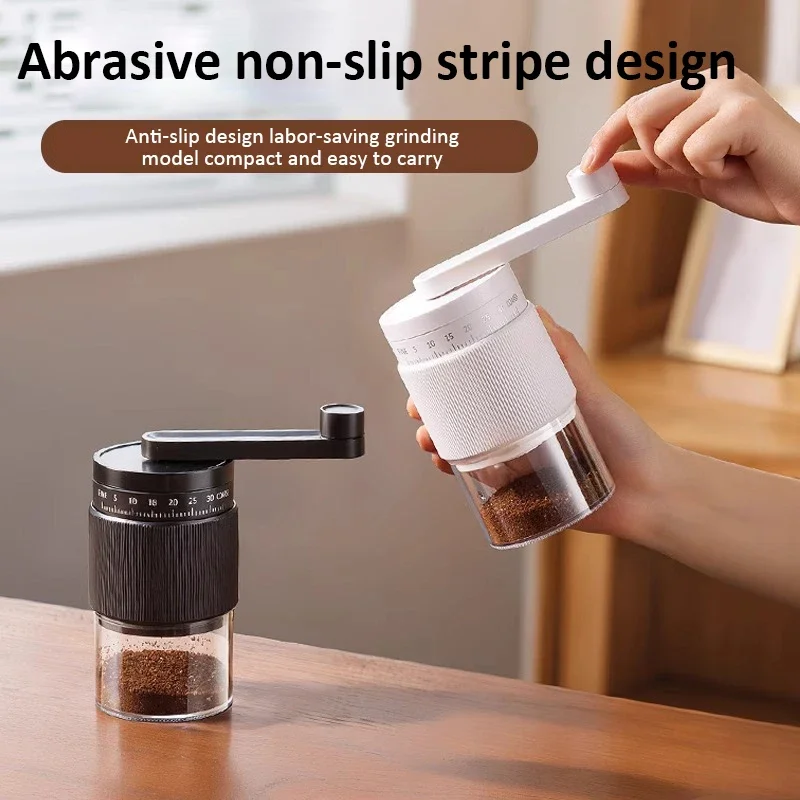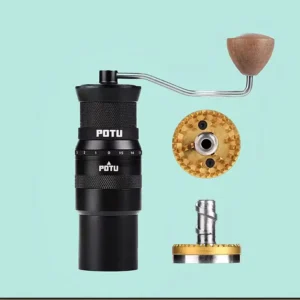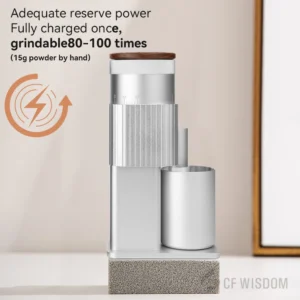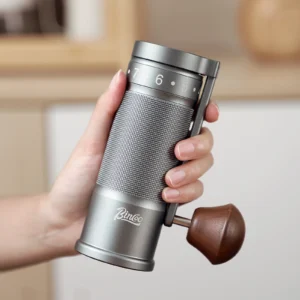Understanding Burr Alignment in Coffee Grinders
Burr alignment refers to how perfectly parallel the grinding surfaces are positioned within your coffee grinder. When properly aligned, the two burrs maintain a uniform distance between each other throughout their entire surface. This precise positioning ensures that coffee beans experience consistent grinding pressure regardless of where they pass through the burrs.
The concept applies to both major burr types, though with important differences:
- Conical burrs: One cone-shaped burr fits inside another, with alignment referring to how centered the inner burr is within the outer burr
- Flat burrs: Two flat, disc-shaped surfaces face each other, with alignment referring to how parallel these surfaces are
The relationship between alignment and grind quality is direct and significant. Even slight misalignments (often measured in hundredths of a millimeter) can create zones where beans experience more pressure and zones where they experience less. This inconsistency directly affects grind consistency with hand burr grinders, producing particles of widely varying sizes.
What’s particularly important to understand is that even premium grinders can suffer from alignment issues. Manufacturing tolerances, shipping impacts, or simple wear over time can create subtle but impactful misalignments that affect your coffee’s taste.
The key difference between various flat vs conical burr manual grinders often comes down to how well they maintain alignment during use, which significantly impacts your brewing results.
How Misaligned Burrs Affect Grind Particle Distribution
When coffee beans meet misaligned burrs, they undergo an inconsistent grinding process. On one side of the burr set where the surfaces are closer together, beans experience more aggressive grinding, creating excessive fine particles (known as “fines”). Simultaneously, on the other side where surfaces are farther apart, beans may not break down completely, resulting in larger chunks (called “boulders”).
This situation creates what coffee experts call a “bimodal distribution” of particle sizes. Instead of a neat bell curve centered around your target grind size, you get two distinct peaks: one representing the excess fines and another representing the larger particles.
By contrast, properly aligned burrs produce something closer to a unimodal distribution – most particles cluster around your intended grind size with fewer outliers. Various factors affecting grind consistency play important roles, but alignment stands as perhaps the most fundamental.
The impact becomes measurable when examining particle sizes:
- In a properly aligned grinder set for medium grind, most particles might range from 600-900 microns
- In a misaligned grinder with the same setting, you might see significant populations at both 200-300 microns (fines) and 1000-1200 microns (boulders)
This inconsistency creates serious brewing problems since each particle size extracts at a different rate, making it nearly impossible to achieve balanced extraction.
The Direct Impact on Coffee Extraction and Flavor
The varied particle sizes created by misaligned burrs lead to extraction chaos in your brewing process. Coffee extraction follows a predictable sequence: first acids, then sugars, and finally bitter compounds. When particles vary dramatically in size, they extract at wildly different rates.
The tiny fines extract rapidly and completely, often moving past the desirable flavors into over-extraction territory. This creates:
* Harsh bitterness
* Astringent mouthfeel (dry, puckering sensation)
* Overly dark flavor notes
Meanwhile, the larger boulders barely extract beyond their surface layer. This under-extraction produces:
* Sharp, aggressive acidity
* Weak, watery body
* Sour, underdeveloped flavor
The paradoxical result is coffee that somehow tastes both bitter and sour simultaneously. This becomes particularly evident in methods demanding precise grind consistency. Espresso made with misaligned burrs often channels (water finds the path of least resistance through the puck), while pour-overs develop uneven beds that extract unpredictably.
The relationship between espresso grind size and flavor becomes nearly impossible to control when burr alignment issues introduce such inconsistency into the process.
Signs Your Grinder Has Alignment Problems
Recognizing burr alignment issues early can save you from coffee disappointment. Look for these clear indicators:
Visual signs in your grounds:
* Noticeable powder mixed with larger chunks
* Inconsistent particle appearance (some shiny, some dull)
* Grounds that appear “dusty” alongside noticeably larger pieces
* Clumping even when grinding for brew methods that shouldn’t clump
Taste indicators:
* Coffee that tastes both bitter and sour simultaneously
* Inconsistent results despite using the same beans and recipe
* Unusually thin body with harsh aftertaste
* Different flavor profiles from the same beans ground on different days
Brewing performance issues:
* Espresso shots that run too quickly or too slowly despite grind adjustments
* Pour-over brews that stall or drain unevenly
* French press with excessive sediment
* Filter clogging despite coarser settings
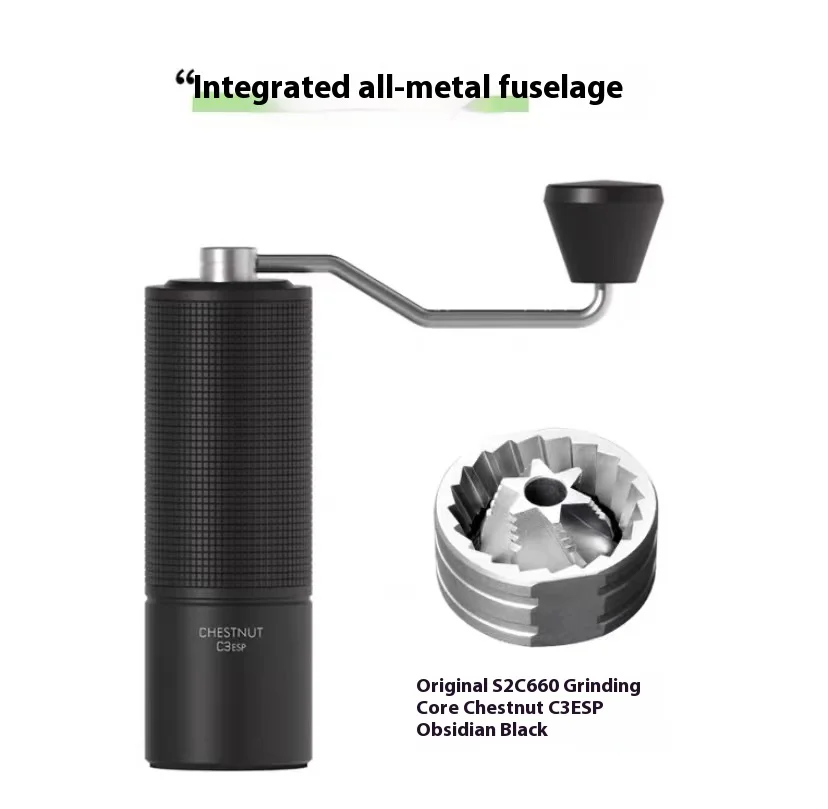
Grinder sounds:
* Chirping or squealing during grinding, especially at finer settings
* Inconsistent sound as the grinder operates
* Sudden pitch changes when beans enter certain areas of the burrs
Understanding why coffee grinders produce inconsistent results often leads back to alignment issues as a primary culprit.
The Marker Test: A DIY Method to Check Alignment
The marker test offers a straightforward way to check your grinder’s burr alignment at home. Here’s how to perform it safely and effectively:
- Thoroughly clean your grinder and remove all coffee residue
- Disassemble enough to access the burrs (consult your grinder’s manual)
- Using a dry-erase marker (never permanent ink), color the edge of the stationary burr
- Reassemble the grinder but leave it unplugged
- Set the grinder to its finest setting where burrs almost touch
- Rotate the moving burr manually (or the motor shaft) for a few complete turns
- Disassemble again and examine the marker pattern
When interpreting results, look for even marker removal around the entire burr circumference. Uneven wear patterns where the marker remains untouched in some areas while completely removed in others indicates misalignment.
Safety warnings:
* Never perform this test with the grinder plugged in
* Use only dry-erase markers that can be completely cleaned
* Clean thoroughly after testing before using again for coffee
While useful, this method has limitations. It only reveals contact points, not the degree of misalignment. Also, the marker thickness itself can sometimes mask subtle alignment issues.
For those seeking consistently excellent results, our precision manual grinders are designed with superior alignment features that maintain proper burr positioning.
Additional Methods to Diagnose Alignment Issues
Beyond the marker test, several other techniques can help confirm burr alignment problems:
The Chirp Test: With a completely empty grinder, gradually move from a coarse to a fine setting. Listen carefully for when the burrs first make contact (the “chirp”). Properly aligned burrs should make contact simultaneously across their surfaces, producing a consistent sound. Uneven or sporadic chirping suggests alignment issues.
Visual Inspection: With good lighting and a magnifying glass, examine the burrs for uneven wear patterns. Look for areas of excessive shine or dullness, which indicate inconsistent contact.
The Paper Test: Cut thin strips of paper and check if they catch equally between burrs at different points around the circumference. Variations in resistance suggest misalignment.
Extraction Analysis: Track your brew times and extraction yields. If these metrics vary widely despite consistent technique, alignment may be the culprit.
Sieve Analysis: If available, using standardized coffee sieves to measure particle distribution can quantify alignment problems.
Quality manual coffee burr grinders typically maintain better alignment over time due to simpler mechanisms with fewer moving parts compared to electric models.
Fixing Burr Alignment Through Proper Cleaning and Assembly
Often, alignment issues stem from improper cleaning or assembly rather than manufacturing defects. Following these steps can restore proper alignment:
Complete disassembly: Remove all accessible parts according to your grinder’s manual.
Thorough cleaning: Pay special attention to:
* Burr teeth and crevices
* Burr carrier components
* Threaded sections
* Mounting surfacesDebris inspection: Even tiny coffee particles or foreign objects on mounting surfaces can cause misalignment.
Damage assessment: Check for:
* Bent shafts
* Warped burr carriers
* Crossed threads
* Damaged mounting pointsMethodical reassembly:
* Ensure all parts are completely dry
* Position components squarely before tightening
* Follow cross-pattern tightening for screws (like tightening a car wheel)
* Tighten evenly with consistent torque
For maximum longevity, incorporate these steps into your regular manual burr grinder maintenance routine. Clean after every 1-2 pounds of coffee for optimal performance, or more frequently when using darker, oilier roasts.
Advanced Alignment Techniques: Shimming and Adjustment
For persistent alignment issues, shimming provides a more advanced solution, particularly for flat burr grinders. This technique involves placing thin material beneath specific points of the burr assembly to correct uneven positioning.
Materials for shimming:
* Aluminum foil (folded to desired thickness)
* Thin plastic shims (0.05-0.1mm)
* Purpose-made metal shims for coffee grinders
* Even thin paper in some cases
Basic shimming process:
1. Perform the marker test to identify areas needing adjustment
2. Cut shim material slightly larger than the mounting area requiring correction
3. Place shim under the part of the burr carrier that needs to be raised
4. Reassemble and test again with the marker method
5. Repeat with different shim thicknesses until alignment improves
This process typically requires multiple iterations and patience. Expect to spend 30-60 minutes for proper alignment. Keep in mind that shimming is a precision task – even 0.05mm can make a significant difference.
Some premium flat burr hand grinders feature built-in alignment adjustment mechanisms, making this process considerably easier.
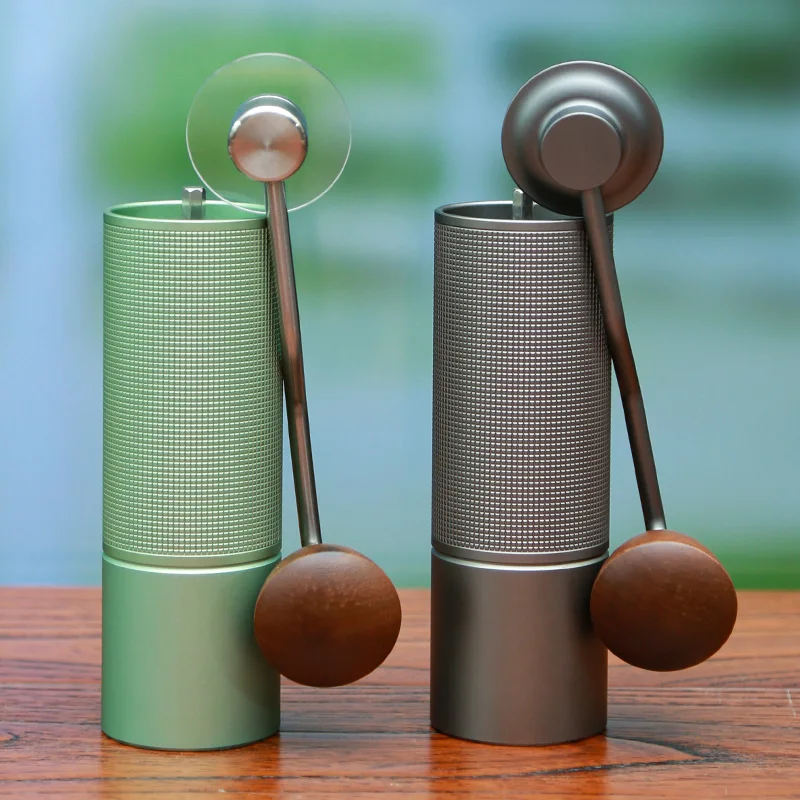
Important cautions:
* Shimming may void manufacturer warranties
* Incorrect shimming can worsen alignment or damage the grinder
* If unsure, consider professional service instead
How Different Grinder Designs Address Alignment Challenges
Manufacturers employ various design approaches to combat alignment issues:
Precision machining techniques:
* Higher-end grinders use tighter manufacturing tolerances
* Premium models often machine burr carriers and mounting surfaces in a single operation
* Quality grinders typically specify alignment tolerances of 0.02-0.05mm
Structural design elements:
* Three-point mounting systems that resist warping
* Self-centering mechanisms for conical burrs
* Stabilizing systems that maintain alignment under pressure
Material choices:
* Cast aluminum or brass components resist flexing
* Temperature-stable materials prevent expansion/contraction issues
* Hardened steel or tool steel burrs maintain shape under pressure
The difference between budget and premium models often comes down to these understanding burr alignment features rather than just the quality of the burrs themselves. Higher-end grinders typically incorporate precision adjustment mechanisms and superior machining that maintain alignment even under heavy use.
Fine Adjustment Hand Grinder, Precision Manual Grinder, Travel Coffee Grinder
Price range: $185.11 through $494.63 Select options This product has multiple variants. The options may be chosen on the product pageHand Burr Grinder, Hand Crank Coffee Grinder, Manual Espresso Grinder, Portable Coffee Grinder
Price range: $262.72 through $300.22 Select options This product has multiple variants. The options may be chosen on the product pageManual Burr Mill, Manual Coffee Grinder Stainless Steel, Manual Coffee Mill Grinder, Mechanical Coffee Grinder
Price range: $127.26 through $130.32 Select options This product has multiple variants. The options may be chosen on the product pageHand Burr Grinder, Manual Coffee Grinder Stainless Steel, Precision Manual Grinder
Price range: $183.64 through $187.52 Select options This product has multiple variants. The options may be chosen on the product page
When to Seek Professional Help with Alignment Issues
While many alignment issues can be addressed at home, certain situations warrant professional intervention:
- Structural damage to burr carriers or mounting surfaces
- Bent motor shafts in electric grinders
- Failed alignment despite multiple DIY attempts
- Precision requirements for commercial or competition use
- Warranty considerations for newer equipment
Professional servicing typically includes precision measurements using dial indicators, specialized alignment tools, and commercial-grade testing equipment. While costs vary widely depending on the grinder model and issues, expect to pay $50-200 for alignment service on premium equipment.
When considering repair versus replacement, factor in the grinder’s original quality, age, and replacement cost. For budget grinders under $100, replacement often makes more economic sense than professional servicing. However, for quality all-metal hand grinders, professional alignment can restore performance and extend usable life significantly.
Is Perfect Alignment Always Necessary? Practical Considerations
Q: Do all brewing methods require perfect burr alignment?
A: Not equally. Espresso and Turkish coffee demand near-perfect alignment due to their fine grind requirements. Pour-over shows noticeable improvements with good alignment. French press and cold brew are more forgiving of minor alignment issues.
Q: How do different roast levels interact with alignment needs?
A: Lighter roasts are more challenging to extract and thus benefit more from precise alignment. Darker roasts extract more easily and can somewhat mask minor alignment issues.
Q: At what point do alignment improvements show diminishing returns?
A: For most home brewers, achieving alignment within 0.1mm is sufficient. Beyond that, improvements become increasingly subtle and require expensive equipment to measure.
Q: How can I determine if my alignment is “good enough”?
A: If your coffee tastes balanced, extracts consistently, and doesn’t show visual signs of severe particle size variation, your alignment is likely sufficient for your brewing method.
For most home users, achieving uniform grind with manual burrs doesn’t require competition-level precision. Focus first on grinder cleanliness, proper technique, and consistent brewing parameters before pursuing perfect alignment.
Can Better Burrs Compensate for Alignment Issues?
While premium burrs can somewhat mitigate alignment problems, they can’t completely overcome them. Here’s how burr quality interacts with alignment:
Burr material considerations:
* Steel burrs typically maintain their shape better than ceramic over time
* Premium coatings (like titanium nitride) improve wear resistance and stability
* Higher-end burrs often feature more precise machining tolerances
Design factors:
* Burrs with reinforced edges better resist deformation
* More cutting surfaces (versus crushing surfaces) can produce more consistent particle size
* Advanced geometry can improve flow and reduce retention
However, even the finest burrs cannot overcome significant alignment issues. Think of it like expensive tires on a car with improper wheel alignment – they may perform better than cheap tires but will still wear unevenly and compromise performance.
The relationship between burr diameter and coffee grind quality is important, but proper alignment remains a prerequisite for those benefits to be fully realized.
Maintaining Alignment Over Time: Best Practices
Preserving proper alignment requires regular maintenance and careful handling:
- Clean regularly – aim for every 1-2 pounds of coffee (or weekly for most home users)
- Follow proper disassembly order – reference your user manual each time
- Use appropriate tools – avoid applying excessive force with improper tools
- Practice gentle handling – avoid dropping or jarring your grinder
- Store properly – keep in a stable environment away from extreme temperature changes
- Check alignment periodically – perform the marker test quarterly
- Address issues promptly – minor misalignments become worse over time
- Be careful with adjustments – avoid forcing the grinder to settings beyond its design
Some grinders, particularly espresso-focused hand grinders, require more frequent alignment checks due to the high precision needed for consistent espresso extraction.
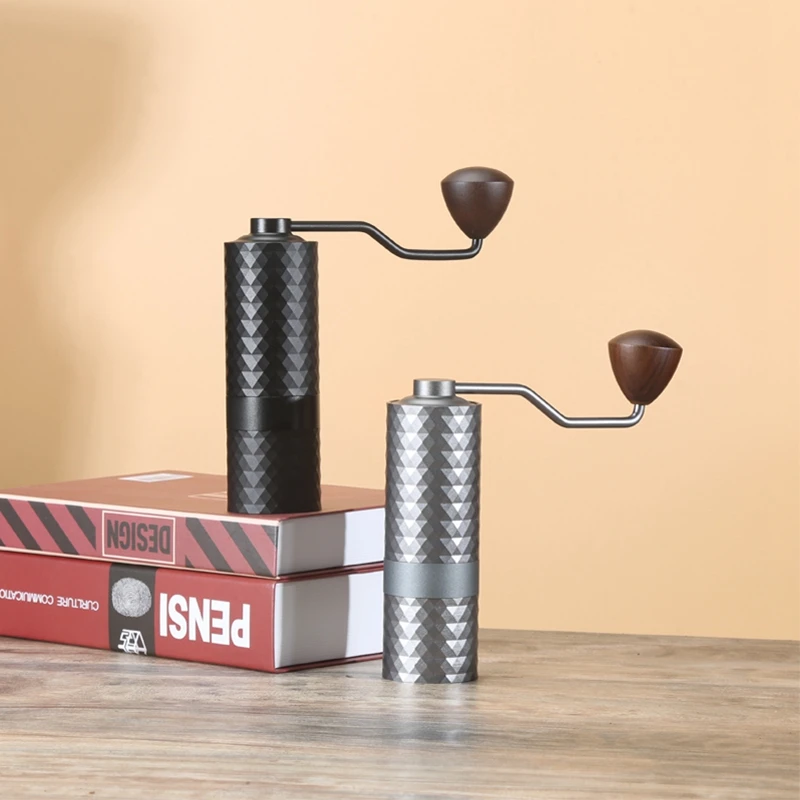
Watch for warning signs of developing alignment issues, such as increasing grind inconsistency, unusual sounds during grinding, or visible wear patterns on the burrs.
How Burr Alignment Affects Grinder Longevity
Proper alignment doesn’t just improve your coffee – it significantly extends your grinder’s useful life. Misaligned burrs create uneven wear patterns that progressively worsen over time. This accelerated wear creates a negative cycle:
- Initial misalignment causes uneven pressure distribution
- Uneven pressure creates concentrated wear points
- Concentrated wear further degrades alignment
- Worsening alignment accelerates the wear process
For manual grinders, poor alignment increases the force needed to operate them, potentially stressing other components. In electric grinders, misalignment creates additional resistance that strains motors and drive mechanisms.
From a financial perspective, proper alignment maximizes the lifespan of your coffee grinder by preventing premature burr replacement and reducing strain on mechanical components. Given that quality burr sets often cost $30-100 to replace, maintaining alignment represents significant long-term savings.
Why Perfect Alignment Matters: The Final Assessment
The pursuit of proper burr alignment ultimately comes down to one thing: extracting the full potential from your coffee beans. When burrs operate in perfect alignment, they create the foundation for exceptional brewing by:
- Ensuring particle size consistency that enables even extraction
- Allowing precise adjustments that actually deliver predictable results
- Creating the conditions for balanced flavors without competing extremes
- Providing the control needed to highlight specific characteristics in different coffees
Consider alignment as the fundamental calibration that makes all other coffee variables controllable. Without it, changes to grind size, water temperature, or brewing time produce unpredictable results. With proper alignment, these adjustments become powerful tools for flavor refinement.
For those seeking to elevate their coffee experience, grinder calibration and alignment represent perhaps the highest-value improvements you can make. The difference between properly aligned and misaligned burrs often exceeds the difference between basic and premium beans.
At Savor Suite, we understand that the journey to exceptional coffee begins with precise grinding. Perfect burr alignment forms the foundation upon which all other aspects of brewing excellence are built.

